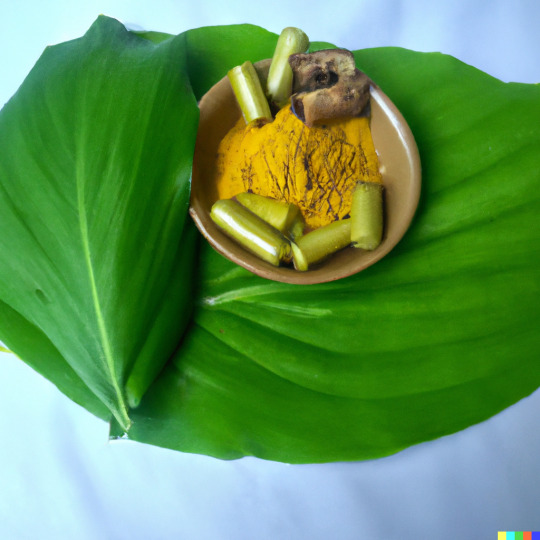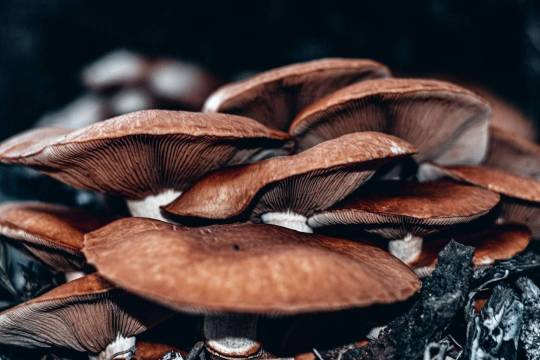Reishi Mushroom is a type of fungus that grows in hot and humid weather, most commonly found in Asia.
Don't wanna be here? Send us removal request.
Text
Turmeric Health Benefits | How Many Type of Turmeric?
Turmeric is a spice commonly used in cooking cuisine that has been used for centuries for its medicinal properties. Read More: https://researchhealthtip.blogspot.com/2023/02/turmeric-health-benefits-how-many-type.html

9 notes
·
View notes
Text
Hello Friends,
i hope you all are doing well.
1 note
·
View note
Text
Why onion is important in kitchen? | Top onion benefits and contains details.
The onion is a type of vegetable and a species of the Allium genus. It is widely used in cooking and is known for its strong, pungent flavor and aroma. Onions come in different shapes, sizes, and colors, including white, yellow, and red. They are a good source of vitamins C and B6, fiber, and potassium.
White onion: White onion is a type of onion with a milder flavor and a sweeter taste compared to yellow onions. They have a white papery skin and a crisp, crunchy texture when raw. They are often used in Mexican and Latin American cuisine, in dishes such as salsa, guacamole, and pico de gallo. They can also be sliced or diced and used raw in salads, sandwiches, or as a topping for burgers and hot dogs. White onions are available year-round and are known for their milder flavor and sweetness.
Yellow onion: A yellow onion is a common type of onion known for its golden-brown skin and strong flavor. It’s widely used in cooking for its sweet, pungent taste and is a staple ingredient in many recipes, including soups, stews, sauces, and stir-fries. It can also be eaten raw in salads or on sandwiches. Yellow onions are available year-round and are known for their versatility in cooking.
Red onion: Red onion is a type of onion with a mild, sweet flavor and a crisp texture. They are characterized by their reddish-purple skin and white flesh, which turns pink when cooked. They are often used raw in salads, sandwiches, and as a topping for burgers and tacos. They can also be grilled or roasted, caramelized, or pickled, which enhances their natural sweetness. Red onions are available year-round and are known for their color, sweet taste, and versatility in cooking.

Onion contains: Onion contains several essential nutrients, including:
Fiber: Onions are a good source of fiber, which can help regulate digestion and prevent constipation.
Vitamins: Onions are rich in vitamins C and B6, as well as folate and potassium.
Antioxidants: Onions contain high levels of antioxidants, including quercetin and anthocyanins, which have anti-inflammatory and anti-cancer properties.
Sulfur compounds: Onions contain sulfurous compounds that give them their strong, pungent flavor and aroma, as well as antimicrobial and anti-inflammatory properties.
In addition to these nutrients, onions are low in calories, fat, and cholesterol, making them a healthy addition to a balanced diet.
Onion powder: Onion powder is a dried, ground form of onion that is commonly used as a seasoning or spice in cooking. It is made from dehydrated onions and has a strong, pungent flavor and aroma. Onion powder can be used as a substitute for fresh onions in many recipes, including soups, sauces, marinades, rubs, and seasonings. It is also a common ingredient in spice blends, such as garlic powder and celery salt. Onion powder is available in most grocery stores and can be stored in a cool, dry place for several months. Read More: https://researchhealthtip.blogspot.com/2023/01/why-onion-is-important-in-kitchen-top.html
1 note
·
View note
Text
how much cilantro to eat for health benefits?

There is no specific recommended amount of cilantro to eat for health benefits. However, adding cilantro to your meals in moderate amounts can provide numerous benefits. Cilantro is a rich source of vitamins and minerals, including Vitamin C, Vitamin K, and potassium. Eating a balanced diet that includes a variety of fruits, vegetables, and spices can help ensure you receive a range of nutrients to support overall health. Read More: https://medium.com/@smithhazel880/how-much-cilantro-to-eat-for-health-benefits-833adfe3ff01
1 note
·
View note
Text
healthy food for diabetes
1 note
·
View note
Text
boost the immune system
1 note
·
View note
Text

Reishi Mushrooms Good For Diabetes
1 note
·
View note
Text
FOODS GOOD FOR HEART DISEASES
What is heart disease?

Heart disease is a cumulative term used for several conditions which effect your heart. It includes diseases like -
· Blood vessel disease, such as coronary artery disease
· Heart rhythm problems (arrhythmias)
· Heart defects you're born with (congenital heart defects)
· Heart valve disease
· Disease of the heart muscle
· Heart infection
According to the Centre for Disease Control and Prevention (CDC), heart disease is a leading cause of death in the United States. Heart diseases can be treated easily when caught early. Each disease has its own symptoms but here are a few common ones.
· Chest pain, chest tightness, chest pressure and chest discomfort (angina)
· Shortness of breath
· Pain, numbness, weakness or coldness in your legs or arms if the blood vessels in those parts of your body are narrowed
· Pain in the neck, jaw, throat, upper abdomen or back
Dizziness, light-headedness and fainting.
Now, that we’ve established the symptoms and causes of a heart disease, let’s look at the list of foods that help maintain a healthy heart.
Right foods for a healthy heart
Healthy heart is the way to go. When trying to mind the health of the heart, one’s food habits matter a lot. One should maintain a healthy diet and try to cut back on food with high level of sodium, high fat dairy products, fatty meats, etc. and should focus on including more fibre in their diet.
1. Reishi Mushroom are rich in sterols
Reishi mushrooms have a lot of nutrients which includes beta-glucans and triterpenoids, compounds that can lower blood sugar levels and blood pressure levels, reducing your diabetes and heart disease risk. They help in boosting immunity and reduce stress levels.
Research shows that people with clogged arteries have reduced chest pains and shortness of breath with the consumption of reishi mushroom extracts. Reishi mushrooms are also rich in sterols, which in combination with triterpenoids helps in maintaining healthy blood lipid levels.
2. Fish High in omega-3s
According to a study, Omega-3 fatty acids from fatty fish may have a protective role in the risk of developing heart disease and slightly reduce the risk of cardiovascular disease events and arrhythmias. They help keep your arteries clear, put your blood pressure on an even keel, and curb your triglycerides, which are fats in your blood that can raise your heart risk.
3. Dark chocolate for your cravings and arteries
Several studies have shown that consumption of dark chocolate less than six serves a week has helped with lowering the risk of heart diseases like developing calcified plaque in the arteries and coronary heart disease. It is advised to consume a high-quality chocolate containing at least 70% of cocoa (The fibre and protein increase with higher cocoa and the sugar decreases).
4. Legumes are high in fibre
According to results of an abstract published by the department of Epidemiology, Tulane University School of Public Health and Tropical Medicine, consumption of legumes four or more times in a week can reduce risk of coronary heart disease by 22% and cardiovascular disease risk by 11%, as compared to those who consumed legumes only once a week. Consumption of legumes, which are high in bean protein and water-soluble fibre, may be associated with a reduced risk of coronary heart disease (CHD).
5. Flaxseeds and chia seeds strengthen the heart walls
Flaxseeds contain omega-3 fatty acids, fibre and phytoestrogens to boost heart health. Chia seeds also provide omega 3, fibre and protein and can be eaten whole. As a plant source of fatty acids, chia and flax seeds contain alpha-lipoic acid (ALA), which has antioxidant properties. According to a combined study conducted by the universities of East Anglia, Durham and Manchester, UK, consuming ALAs may slightly reduce heart attack risk and death from coronary events.
6. Leafy Vegetables contain magnesium
A new study from Edith Cowan University (ECU) in Joondalup, WA, in Australia finds that leafy greens and other vegetables high in nitrates in particular confer significant cardiovascular benefits. Spinach is one of the best sources of dietary magnesium, and consumption of spinach is associated with a raft of health benefits. Regular consumption of magnesium helps maintain a healthy heart beat.
7. Berries are full of antioxidants
Berries are also full of antioxidant polyphenols, which help to reduce heart disease risk. Berries are a great source of fibre, folate, iron, calcium, vitamin A, and vitamin C, and they are low in fat. One study, conducted by the Universities of Nevada and Oklahoma, in 33 adults with obesity showed that consuming strawberries at two and a half servings for 4 weeks significantly improved insulin resistance and LDL (bad) cholesterol.
Tips for a healthy heart diet
· Check your portion sizes – Managing the portion size of every meal is a very important step which helps in preventing all kinds of diseases, especially those of the heart. One should keep in mind to not cut off important nutrients.
· Include Physical exercise in your routine - A number of studies have also shown that people who exercise regularly are less likely to suffer a sudden heart attack or other life-threatening cardiac event. While exercise has benefits in and of itself, the best way to prevent heart disease is to combine exercise with a healthy diet.
Additional benefits of exercise
Improves the muscles’ ability to pull oxygen out of the blood, reducing the need for the heart to pump more blood to the muscles
Reduces stress hormones that can put an extra burden on the heart
Works like a beta blocker to slow the heart rate and lower blood pressure and increases HDL or “good��� cholesterol and helps control triglycerides.
Including the foods mentioned above along with a balanced diet and an active life style is the secret to a healthy heart.
2 notes
·
View notes
